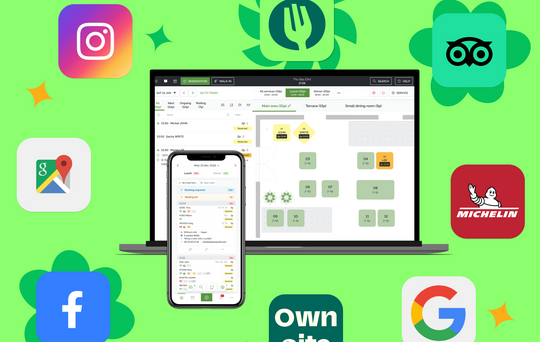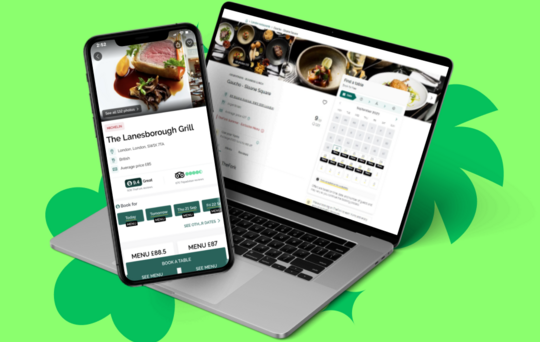Series - Crafting the Ultimate Restaurant Page on TheFork - Restaurant Information

Next up in our series on crafting the perfect restaurant page is restaurant information. In a world brimming with dining choices, even the tiniest details can significantly influence a diner's decision. We're here to explore how maintaining a complete profile can set your establishment apart in the bustling culinary landscape.
Find all other articles in the "Crafting the Ultimate Restaurant Page on TheFork" series here:
Why Complete Restaurant Information Matters
Picture this: a potential diner is browsing through TheFork, on the hunt for the perfect place to savour a meal. They have specific preferences, dietary needs, and expectations in mind. Now, consider how crucial it is for your restaurant to provide them with all the necessary information to make an informed decision. This is where complete restaurant information becomes invaluable. It might not seem as glamorous as your menu or as enticing as your photos, but it's often the available details about your establishment that remove any doubts and convert a visitor of your restaurant page into a visitor of your restaurant.
The Key Data to Maintain
Certain elements of your restaurant page hold information worth keeping up to date. The good news is that they don't require constant updates.
- Opening Hours: Your restaurant's opening hours are more than just numbers on a screen; they're essential for diners planning their visits. Surprisingly, this is an aspect of the restaurant page we often see left incomplete or not reflecting the actual services. Accurate and up-to-date opening hours help diners understand when you're available and for how long they can enjoy their meal, preventing any disappointments due to unexpected closures.
- Restaurant Description: A thoughtfully crafted restaurant description serves as your opportunity to paint a vivid picture of the dining experience you offer. This is where you can convey your restaurant's unique ambiance, signature dishes, and what sets you apart. Think of it as your virtual window to entice diners. Interestingly, our data reveals that even having a description at all increases conversion rates – and thus the likelihood that a visitor proceeds to make a booking on your profile.
- Other Essential Information: Details about payment methods, your chef's name, dietary requirements you can accommodate, and any special features or services you offer are all pieces of the puzzle. The more comprehensive your information, the easier it is for diners to understand what to expect when they choose your restaurant. Small details like whether or not you accept credit cards might not seem like a big deal, but for that one diner ready to splurge but unable to do so because you don't appear to accept their credit card, it could make the difference between an empty table and a satisfied diner in your restaurant.
Try TheFork for free
Understanding the Power of Tags
Tags are the unsung heroes of your restaurant profile on TheFork. They play a significant role in attracting diners and ensuring your restaurant appears when they search for specific criteria. Tags help your restaurant show up in search results when users filter by specific attributes, increasing the likelihood that they'll discover you.
Many diners discover restaurants through search engines like Google, landing on results pages filtered by tags. By having the right tags, you can extend your reach beyond TheFork and attract diners searching for specific dining experiences.
Tagging Tips
When it comes to setting tags for your restaurant, remember a few key points:
- Keep It Simple: Avoid going overboard with tags. Stick to the most relevant ones to your restaurant to prevent misunderstandings and negative reviews. Simplicity is key.
- One Cuisine Tag: While your menu may offer diverse options, choose just one cuisine type that best represents your restaurant for tagging purposes. This tag will prominently display next to your restaurant's name, so choose wisely. For example, if your restaurant primarily serves Japanese cuisine but also offers a few Chinese dishes, opt for the Japanese tag. This clarity will prevent any confusion and help diners quickly identify your restaurant's specialty.
- If you're ever in doubt, don't hesitate to reach out. Your Account Manager or our support team are more than happy to assist you in selecting the right tags, striking a balance between quality and quantity.
Let’s get started
Providing complete and accurate restaurant information, along with the right tags, can make all the difference on your restaurant page. It's about creating a seamless and enticing experience for potential diners and helping them choose your restaurant with confidence. By dedicating just a few moments of your time to think it through thoroughly and set it up accordingly, you're already in an excellent position to convert visitors into bookers on your restaurant profile. Revisit your restaurant's information on TheFork, and ensure it's as complete as possible. Showcase to diners what sets your establishment apart, and let the right tags guide them to your culinary haven. Get started here.
Up next
Find all other articles in the "Crafting the Ultimate Restaurant Page on TheFork" series here:
Don't have a restaurant page on TheFork yet but eager to get started crafting one? We'll help you get published here.

















